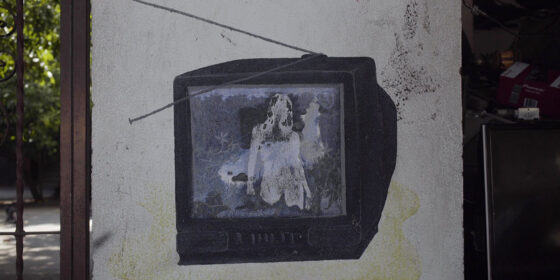TIFF 2023 | Nowhere Near (Miko Revereza, Philippines/US) — Wavelengths

By Michael Sicinski
The third feature film by Filipino experimentalist Miko Revereza may be his most conventional work to date. But as one settles into Nowhere Near it becomes evident that this is by design. Where many of his previous films have addressed the almost hour-by-hour challenges faced by undocumented immigrants, here Revereza casts a somewhat wider net. This film is a personal and philosophical essay (complete with onscreen footnotes) that considers displacement as a global condition, although one that impacts marginalized subjects more than it does others. Beginning with intimate footage of Revereza’s family, Nowhere Near starts out in the US, where his mother is struggling to find employment because she does not have the required documentation. (We learn that the filmmaker’s family was on track for legal immigration until their case was sidelined by post-9/11 xenophobia.) While killing time in the Mall of America in Minneapolis, Revereza remarks not only upon the bureaucratic nature of dislocation, but its material inscription in the late-capitalist landscape. No one is allowed to be anywhere, unless their presence is somehow generating profit.
In the second half of the film, Revereza follows his grandmother as she returns to the Philippines. Since she has been away, the property that was once in her family has been expropriated. A major thoroughfare runs through what’s left of her childhood home; all she finds are the broken remnants of the foundation. At this point, Nowhere Near expands on our usual narratives of immigration and displacement, since the Philippines no longer looks like the homeland Revereza’s lola has maintained in her memories. Revereza addresses the Japanese occupation, American colonialism, and the physical destruction of the monsoon season, arguing that the Philippines represents a unique space of loss and misremembering, a palimpsestic archipelago.
Structurally, Nowhere Near enacts Revereza’s ideas about change, dislocation, and temporary solidity. The film doesn’t proceed by argument so much as it unfurls a series of fragmented observations which orbit one another and eventually form an impressionistic whole. In one brief scene, we see a laptop screen with an essay (presumably by the filmmaker) addressing Freudian melancholia as it relates to Filipino history. As that history is always under erasure, the nation finds itself mourning for a lost totality that is inaccessible, and that may never have existed. Revereza extends this thinking to his own practice, as he remarks on moments when his cinematography is too shaky or underlit, because he was preoccupied with the events taking place, not on how they would be recorded. Nowhere Near suggests that the past is indeed another country, and that it confers its citizenship onto no one.
Michael Sicinski

